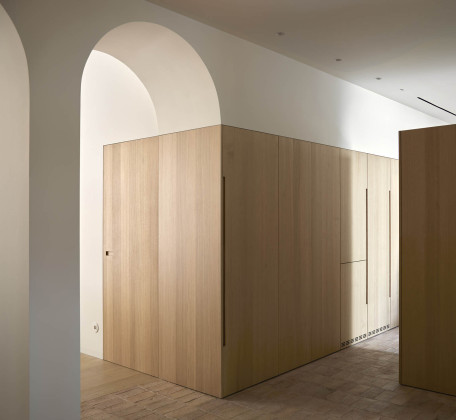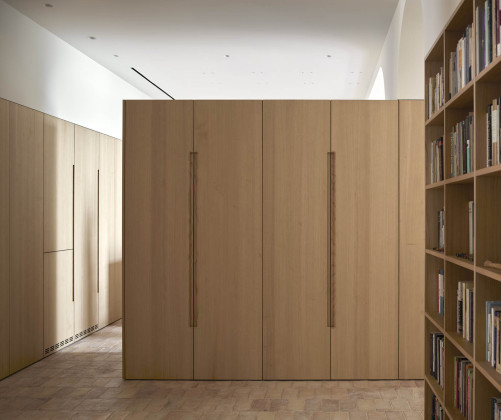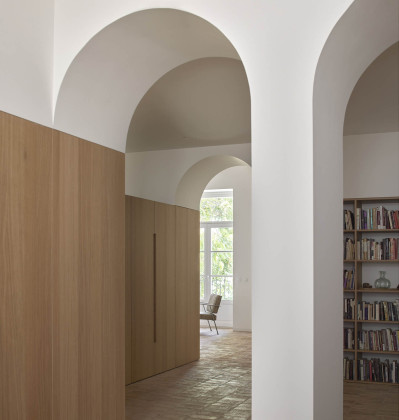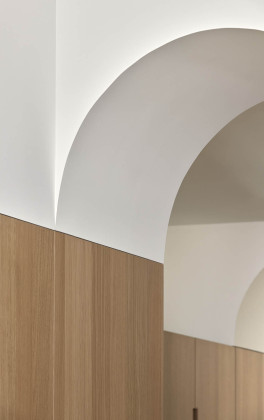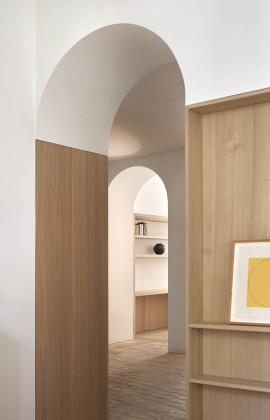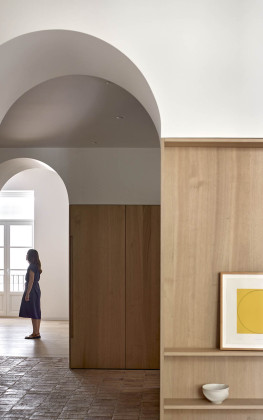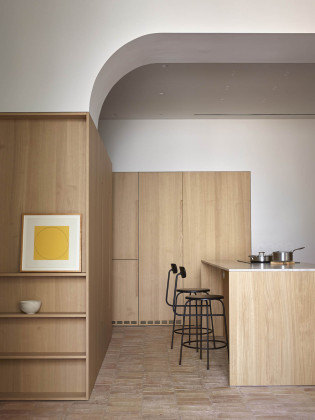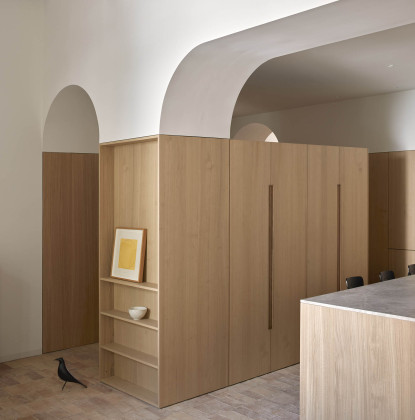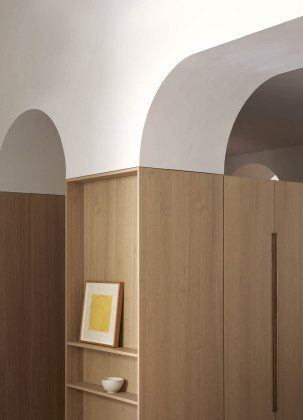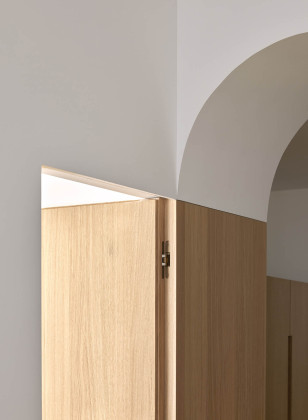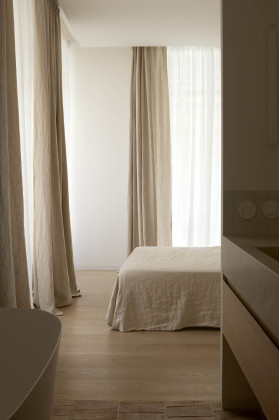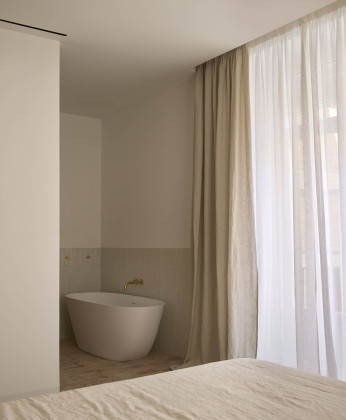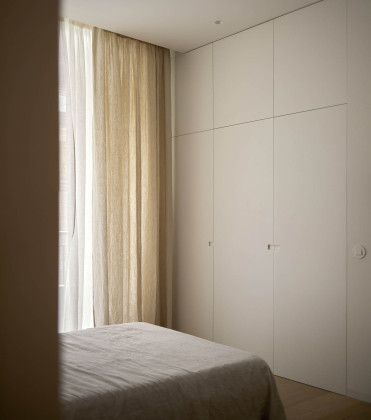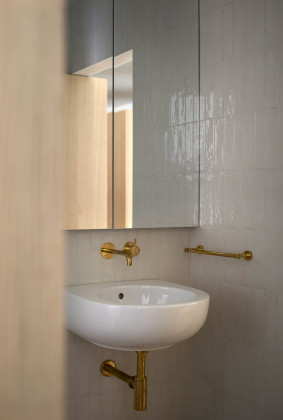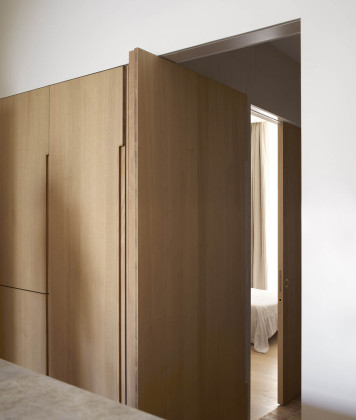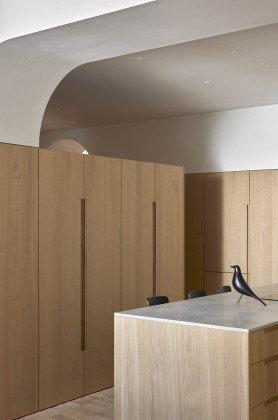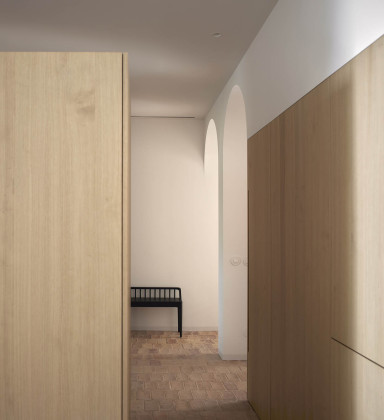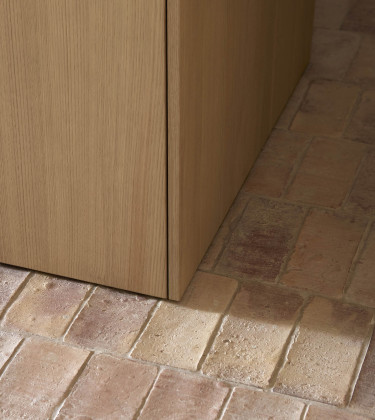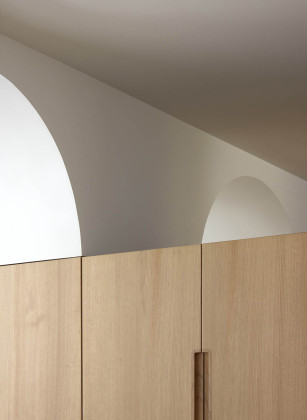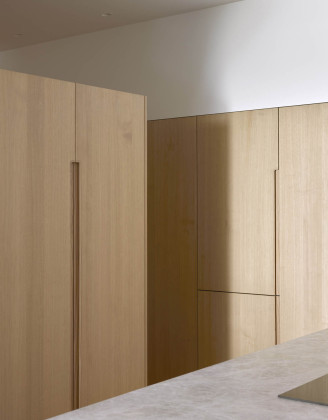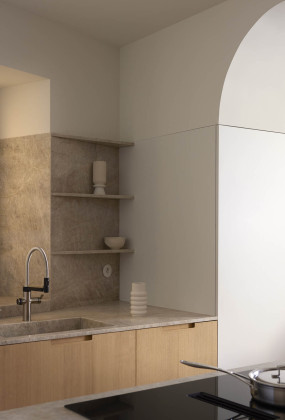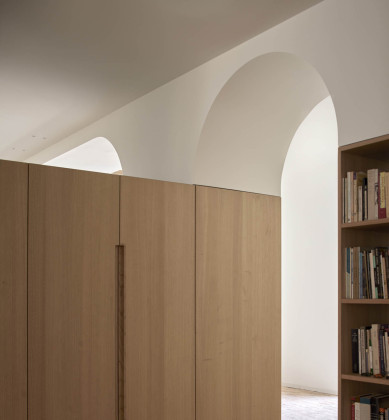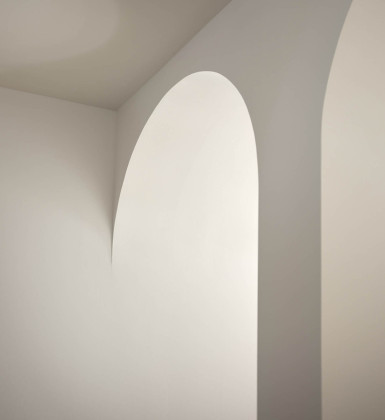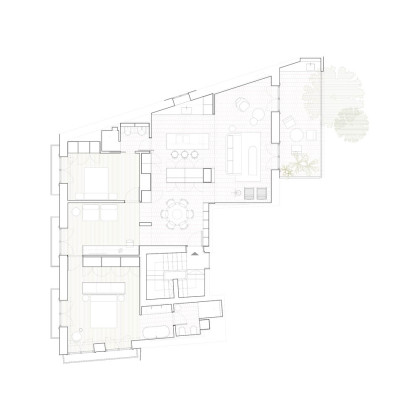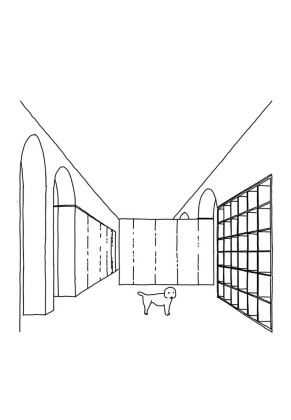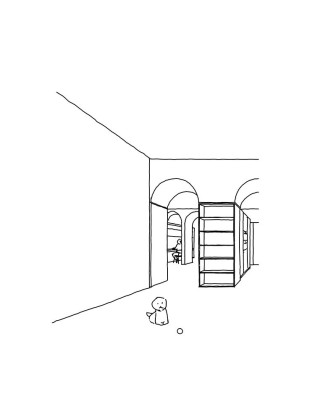GOB 17 House
Deisgned by DG Arquitectos, the GOB 17 House is located in the La Xerea neighborhood of Valencia, Spain. Merxe Navarro describes the project as follows:
GOB 17 is about transition, about movement. Changing "The Big Apple" for the Mediterranean is more than an act of will, it is an intricate challenge. Lately, more and more people have decided to cross the ocean to start a new life, and many of them choose a city that beats rakings about the best cities to live in: Valencia, a cozy and walkable city with pristine weather, and a huge festive tradition.
We live in the cities at a certain point in their history. They grow and change as the people that live inside, in a constant motion that forces you to change with them. The protagonists of this story, a family formed by a couple and a playful puppy, decided that it was the right time to change the calculated rationalism of the American Mid-Century for the Mediterranean cultural palimpsest.
Finding a good starting point was crucial. The perfect one is always before the purchase, so no hidden features can conditionate the result. After a good briefing and a detailed study of needs, came the search. Several properties were visited before the chosen one appeared, a "rara avis" inside the Historical District. Close to the River Turia's park, a noble building from the XIX century stands on a particular corner with two main façades and an interior patio full of trees. Its original distribution, chaotical and twisted, adapts itself to the singular location, getting nourished from the surroundings and claiming its place. It is funny to think that these kinds of singular and erratic spaces were the ones that, at the same period, the Commissioners Randel jr, Morris, Rutherfurd, and De Witt tended to avoid for the designing of Manhattan's Plot. The grid ensured the same light and air conditions for all the buildings, perfectly rational, but with no room for improvisation.
This project aims to connect all these elements, making not only that the spaces are visually connected, but creating momentum around the space. Two main volumes organize it, welcoming the visitor, pointing the sight, and allowing the hard and stony city presence to penetrate towards the organic greeny inner nature. They relate with some distance to the preexisting construction, letting the original structures to be exposed.
The materiality is complex and based on a complementary duality. On one side, the original construction, solid and heavy, remarks a central space like a Roman peristylum. This enclosed space is permeable to light, sight, and movement, allowing it to play with transitions across the spaces. Those preexisting elements have an abstract matte white finish for balancing the weight and making it atemporal. On the other side, the introducing elements have a more contemporary and sober approach. The floor and the custom-made cabinetry support all the functionality while keeping a warm feeling. This is achieved through a natural material palette, not only to enhance the noble character of the building but also to provide a complete haptic experience. Oak veneer on the integrated pieces of furniture, terracotta straw finish flooring, ivory tones from the quartzite that pair the wood tone with the white preexisting walls, and finally the brass accents. Altogether create a harmony of golden tones reflected in the white finish of the original construction, getting feedback one from the other and integrating the place's history in the new narrative that will bring the new characters.
 24.04.2024
24.04.2024



